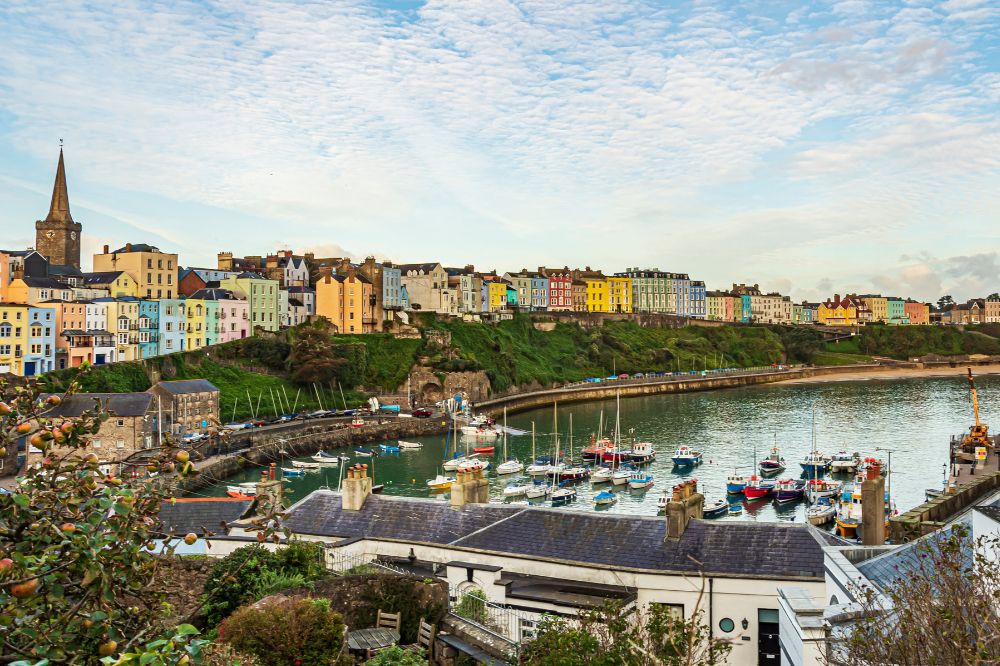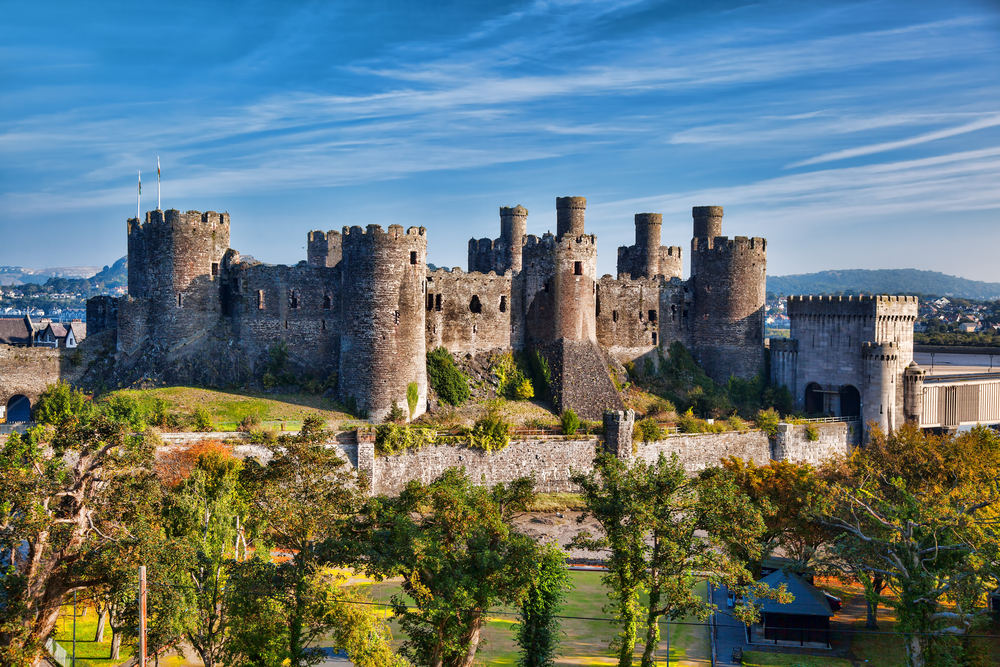Wales plans a tourism tax from 2027 – what it means for visitors and communities

Linda Osti, Senior Lecturer in Tourism Management, Bangor University
Rhys ap Gwilym, Senior Lecturer in Economics, Bangor University
The Welsh government is set to introduce a visitor levy, or tourism tax, from 2027. Outlined in a new bill, visitors could pay £1.25 per night for most accommodations, with a reduced rate of £0.75 for camping pitches and dormitories.
A report we authored on the effects of visitor levies around the world helped to inform the bill.
This move follows similar steps taken in Scotland. It would make Wales the 25th country in Europe, by our count, and the 50th worldwide, to implement some type of visitor levy.
Hypothecated
Most tourism taxes are structured as overnight stay levies, such as those in Spain, Italy and the US (where it is known as the “lodging tax”). However, some countries impose entrance taxes at borders, as seen in New Zealand, or charge entrance fees for day visitors, as in the recent example of Venice.
The Welsh levy will be hypothecated, meaning funds will be designated specifically for tourism-related projects. Potential uses include cultural preservation, upgrading transport systems and creating amenities that benefit both locals and tourists.
While the Labour Welsh government, Plaid Cymru and the Liberal Democrats – which collectively hold more than 70% of seats in the Senedd (Welsh parliament) – support the levy, opposition is strong. The Conservative party and some industry groups argue that additional costs might deter visitors, particularly in a sector they claim is already heavily taxed compared to other parts of Europe.
But the reality is more nuanced and our research suggests that these concerns may be overstated. When properly implemented in collaboration with industry and local interested parties, a visitor levy can enhance the appeal of destinations by addressing the negative effects of tourism.
How could Wales maximise the levy’s benefits?
Our research highlights several strategies to ensure the Welsh levy delivers maximum benefits.
First, it could introduce tailored rates. Some countries apply different rates based on factors such as length of stay, peak seasons, or exemptions for children. The bill currently lacks this flexibility.
Second, it could include day visitors, as the bill currently applies to overnight stays only. Day tourists often contribute less to the local economy while still generating environmental and social costs, such as increased traffic. Including them could address the strain placed on resources and infrastructure.

Third, the bill gives significant powers to local authorities to determine how tax revenues are distributed. Our research provides local authorities with clear evidence on how they should leverage these powers to bring real benefits to the tourism sector and the host communities in their areas. We identified two revenue-disbursing models that have encouraged effective local collaboration in the destinations we studied.
‘Grant-making’
For example, a “grant-making” model has been used in the Balearics and Iceland to fund various projects. These can be aimed at improving aspects of tourism while also mitigating its effects.
But a more common way of disbursing tax revenues is through a designated body. In most of the destinations we examined, destination management organisations are responsible for distributing tax revenues. Such organisations coordinate marketing efforts, develop infrastructure and mitigate any negative effects. For instance, in South Tyrol, Italy, 70% of revenues are spent by community-level cooperatives. The remaining 30% goes to a regional organisation.
Establishing a network of destination management organisations in Wales could provide a unified vision for its diverse tourism landscape.
Finally, monitoring and evaluating the levy is vital. Regular reviews of the levy’s effects could ensure it remains effective. Venice’s day visitor tax, for example, underwent a four-month trial before its formal adoption. Wales could consider a similar approach, encouraging local authorities to share best practices.

Notably, the bill already proposes creating a registry of tourism accommodation. This could be pivotal for Wales’s tourism sector, providing much-needed data to inform policy and identify opportunities for growth. For the registry to be truly effective, however, it will need to collect detailed, regularly updated information beyond what the current bill mandates.
Diverse
Wales’s tourism sector is diverse yet under performs in some areas. While the country boasts the highest number of bed spaces per capita in Europe (157 per 1,000 residents compared to a European average of 59), its contribution to the economy and employment remains relatively modest.
The success of the visitor levy should ultimately be judged on whether it can help move these metrics in a more positive direction.
From Cardiff’s event-based tourism to coastal caravan parks and the rugged landscapes of Eryri, the levy offers a chance to support the industry’s growth while addressing its challenges.
By learning from international examples and tailoring the levy to local needs, Wales has an opportunity to create a tourism model that benefits both visitors and the communities that host them.
This article was first published on The Conversation
![]()
Support our Nation today
For the price of a cup of coffee a month you can help us create an independent, not-for-profit, national news service for the people of Wales, by the people of Wales.








Is the inference that “day visitors” spend nothing in the local areas that they visit?
In some popular visitor sites in Wales the parking prices are exorbitant and so fail to encourage visitors .Do all those who book holiday homes spend any money in the local economy with fuel ,food,gift shops and visitor attractions? Of course they do and they need encouragement to do so.
How exactly do they propose to collect a tourist tax from day visitors? They don’t really explain it.
Parking is the visitor levy on day visitors, which could be reduced if there was another source of revenue from visitors. But it’s not about who adds what to the economy, it’s about who pays to support and grow that activity, residents or visitors?
The point you make is valid, but entirely wrong. Largely because of the ease of transport between Wales and England, most “tourist” activity is actually by day visitors. The reality is that many drive in, enjoy the view, eat their picnic (bought before leaving home) and disappear. Local purchases are minimal. The “benefit” to the local economy is the expense of building (by the Welsh government) roads and car parks, traffic jams in the summer and increased levels of CO2. I agree with the principal of a tourist tax, although the Welsh government might spend a lot more effort on… Read more »
The visitor economy is a real part of the economy so rather than wishing it away it’s smarter to make it work better. The biggest problems are low wages, low average spend (for the reasons you gave), hyperseasonality and inconvenience for locals. All of these can be solved by developing the sector to encourage more visitors to visit more areas for more of the year and to stay for longer. A visitor levy will allow local government to work on these areas without taking funds from essential services. This doesn’t however remove the need to diversify the economy to ensure… Read more »
“Make it work better” – I entirely agree!! There is no question that a tourist industry can be an important part of the wider economy, but not as now with day trippers popping in and out. We have a fascinating heritage, a wonderful language and a distinct history. These form the basis of tourist interest in other nations, the current advertising for holidays simply suggests lots of climbing and swimming….. The real issue is what Eddy has touched upon. An example – my two youngest grandchildren enjoy a caravan holiday in Kiln Park. Putting aside the issue of park ownership,… Read more »
It will mean fewer tourists and a weaker Welsh economy.